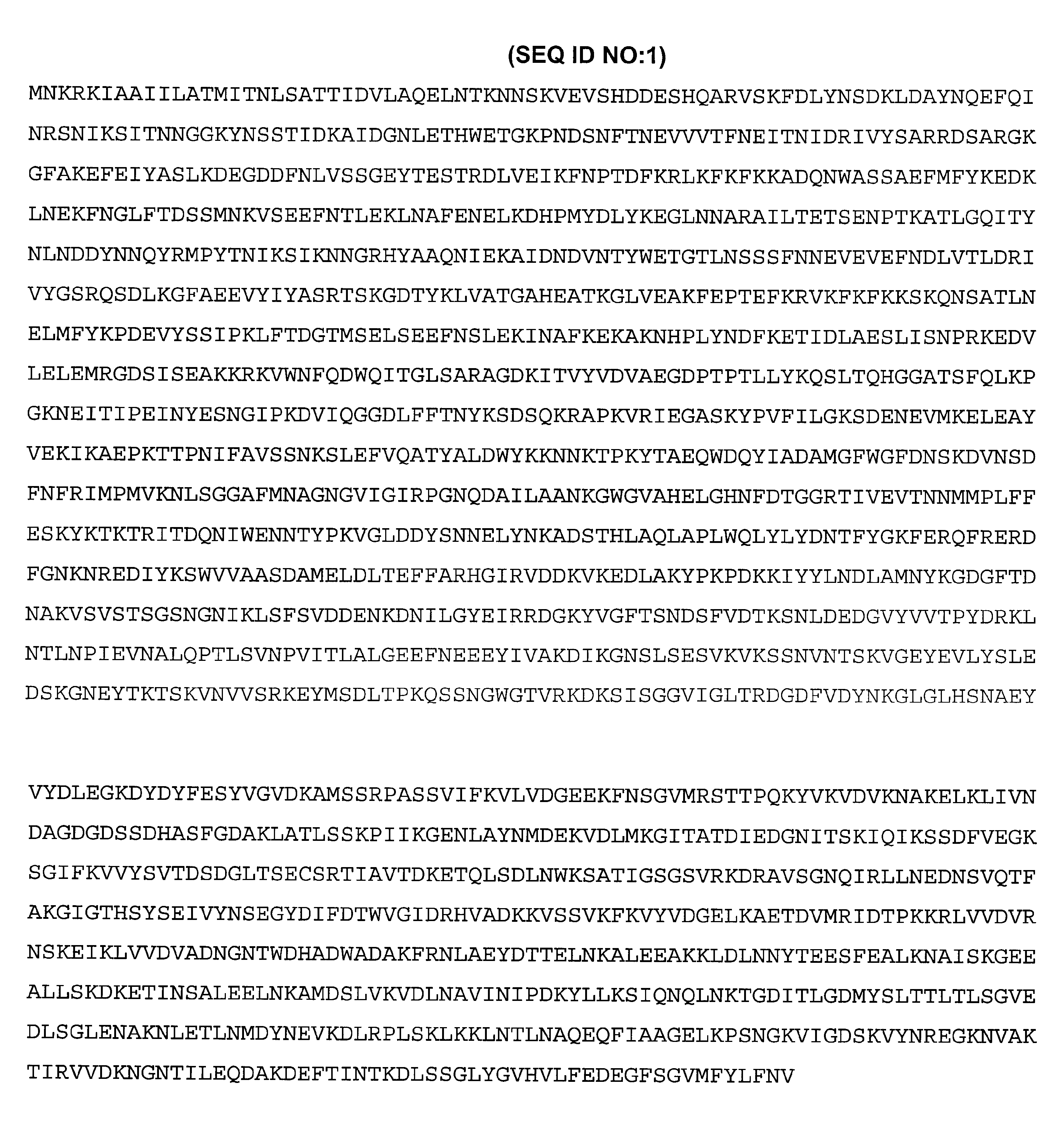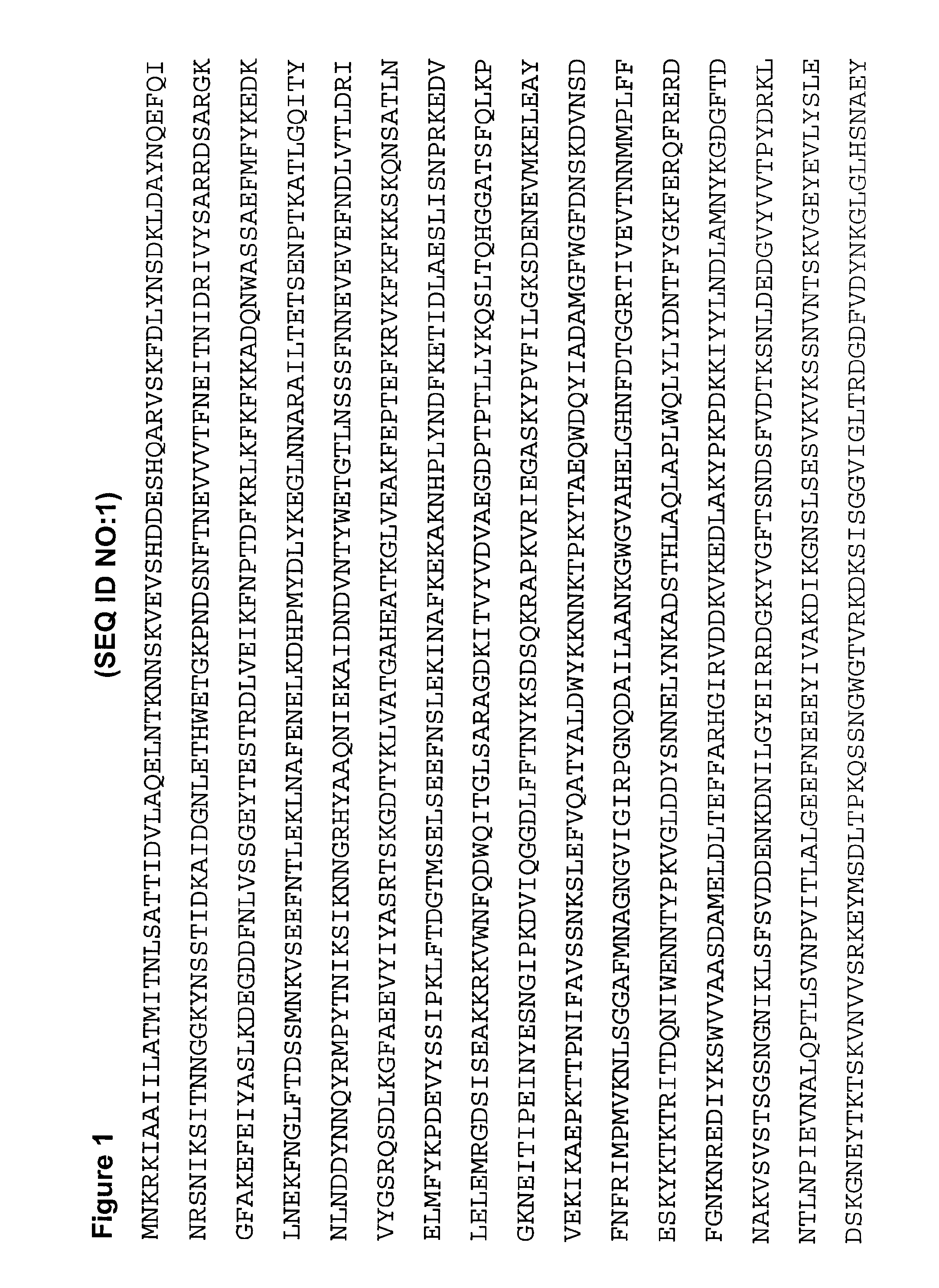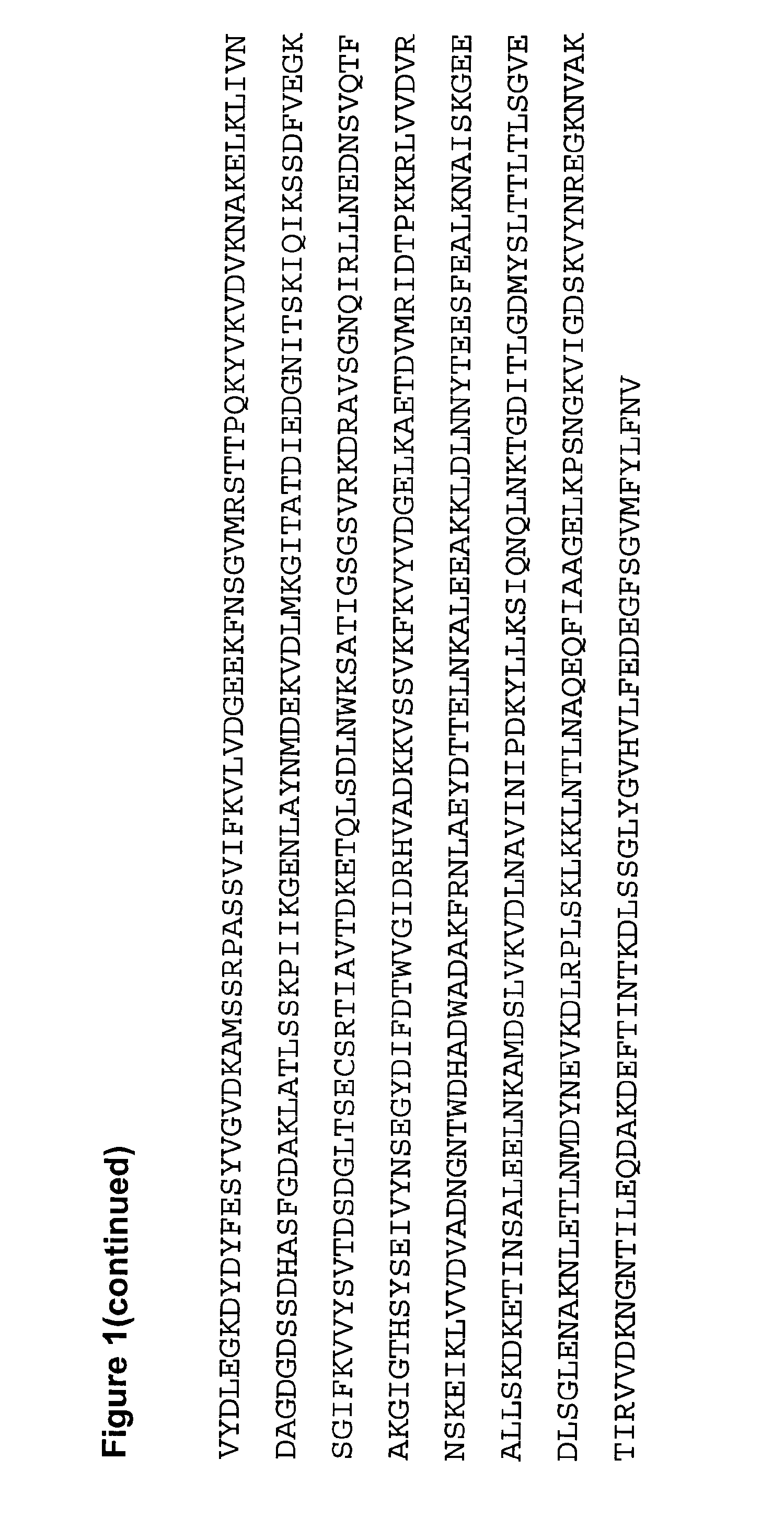Vaccine against clostridium perfringens
a technology of clostridium perfringens and vaccines, applied in the direction of biocide, accessory food factors, animal feeding stuff, etc., can solve the problems of no knowledge of immunity, and no other simple way to control infection
- Summary
- Abstract
- Description
- Claims
- Application Information
AI Technical Summary
Problems solved by technology
Method used
Image
Examples
example 1
Clostridium perfringens Antigens Recognized by Broiler Chickens Immune to Necrotis Enteritis
[0071]Four strains of C. perfringens (CP1, CP4, CP5, and CP6) used in this study are clinical isolates from field cases of NE. Strains CP1 and CP4 are virulent, and CP5 and CP6 avirulent, isolates, as assessed by their abilities to cause NE (32). Clostridium perfringens cells were grown anaerobically in an empirically formulated medium (tryptic soy broth [Difco] 50%, nutrient broth [Difco] 25% and peptone water [Difco] 25%) for 24 h at 37° C., and the cells and culture supernatant were collected thereafter. The cells were lysed by eight freeze-thaw cycles with liquid nitrogen to obtain whole-cell proteins. The culture supernatant was dialyzed and concentrated by use of 10-kDa cutoff Amicon filters (Millipore Inc., Billerica, Mass.) to obtain secreted proteins. The protein concentration was determined using a PlusOne 2-D Quant kit (Amersham Biosciences, San Francisco, Calif.). The protein cont...
example 2
Antigenic Epitopes of Alpha-Toxin
[0075]Purified C. perfringens alpha-toxin (Sigma Laboratories) was separated by SDS PAGE and Western blotting performed using chicken immune serum and intestinal antibodies, as well as alpha-toxin antiserum (J. G. Songer, University of Arizona) raised in goats. As expected, alpha-toxin antiserum detected purified alpha toxin (43 kDa). Interestingly, in the Western immunoblot no antibodies to alpha-toxin were detected either in serum or intestinal washings of immune birds. However, further study showed antibodies to alpha toxin were detected in serum at titres of 5000 when native (and not denatured) alpha toxin was used in a lecithinase inhibition assay. In addition, there was immunoreactivity when a Western immunoblot was run against alpha toxin electrophoresed in a non-denaturing gel. This suggests that neutralizing antibodies to alpha toxin are present in immune birds but these may be to conformational rather than linear protein epitopes.
[0076]Achi...
example 3
Cloning, Expression and Purification of Secreted Antigenic Polypeptides from Virulent C. perfringens
[0077]The chromosomal DNA of the virulent, protective, C. perfringens strain CP4 was used as the source of DNA for cloning of secreted antigens: alpha-toxin, glyceraldehyde 3-phosphate dehydrogenase (GPD), pyruvate: ferredoxin oxidoreductase (PFOR), fructose 1,6-biphosphate aldolase (FBA) and a Hypothetical Protein (HP). PCR was performed using the proofreading DNA polymerase (Qiagen, Mississauga, ON) and primers designed to specifically amplify DNA fragments in the genes. The primers used to amplify the genes are given in Table 1.
TABLE 1List of primers used to amplify genes encodingproteins used in immunization experimentsAmpliconsizeGeneSequences 5′-3′(bp)Alpha-toxinForward-1100ccgctcgagttgggatggaaaaattgatReverse-ccggaattctttatattataagttgaatttHypothe-Forward-5400ticalccgctcgaggaataagagaaaaatagcagproteinReverse-ccgggtaccacgttaaataaatagaacatGlyceralde-Forward-1000hyde 3-ccgctcgagggta...
PUM
| Property | Measurement | Unit |
|---|---|---|
| Molecular mass | aaaaa | aaaaa |
| temperature | aaaaa | aaaaa |
| pH | aaaaa | aaaaa |
Abstract
Description
Claims
Application Information
 Login to View More
Login to View More - R&D
- Intellectual Property
- Life Sciences
- Materials
- Tech Scout
- Unparalleled Data Quality
- Higher Quality Content
- 60% Fewer Hallucinations
Browse by: Latest US Patents, China's latest patents, Technical Efficacy Thesaurus, Application Domain, Technology Topic, Popular Technical Reports.
© 2025 PatSnap. All rights reserved.Legal|Privacy policy|Modern Slavery Act Transparency Statement|Sitemap|About US| Contact US: help@patsnap.com



